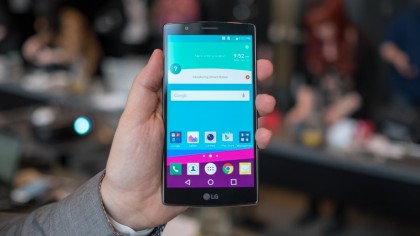LG G4 vs LG G3
Leather beats plastic

The LG G3 is a tough act to follow, as it was one of the first phones with a QHD screen, as well as featuring an innovative camera with a super-fast laser autofocus.
To ensure that the LG G4 is a decent successor, LG had to do more than just match and upgrade those features, it also needed to impress us with some genuine innovation - and that's no small task.
Thankfully it's a challenge that the LG G4 has risen to, as it's taken many of the best bits from the LG G3, like its screen, and not only improved on them but added various new bells and whistles too.
So is the LG G4 an improvement in every conceivable way, or has it just got a shiny new coat of paint? We put the two phones head to head to find out.
Design

The LG G4 looks distinctly different to the LG G3 and that can only be a good thing, given that we weren't huge fans of the G3's lightweight plastic chassis, and the metallic effect on the G3's shell looks nice but isn't entirely convincing in the hand.
The LG G4 replaces the G3's faux-metal with a vegetable-tanned leather back (similar to the Moto X), which looks and feels far more premium and combined with a gentle curve it's designed to provide a more comfortable grip.
The LG G4 is also available in two leather variants; brown and black, with the former looking more impressive, but the latter feeling more rugged (and also feels nicer to hold).
Sign up for breaking news, reviews, opinion, top tech deals, and more.
But if you were a fan of the G3's polycarbonate LG has also produced a plastic version of the G4, with the same metallic design as the G3 (as well as one with a ceramic look).
Unfortunately the leather is too thinly stretched over the back of the phone, which results in that version of the LG G4 not feeling as premium as it should.
As with the G3, the G4's polycarbonate body also feels slightly cheap, especially when pitted against other flagship handsets with metal bodies such as the HTC One M9.
Whichever option you go for LG promises that the G4 is 20% stronger than the G3, though it's also slightly larger and heavier, at 154g and 149.1 x 75.3 x 8.9mm.
The LG G3 on the other hand is 146.3 x 74.6 x 8.9mm and 149g; it's not a huge difference but then the G3 itself isn't a small phone, so the LG G4 definitely isn't the handset for fans of compact designs.
However while the LG G3 feels like it is just on the edge of being too big, the LG G4 has been curved to make it feel a little more comfortable to use with one hand.
Screen

There's less to choose between the screens, as both phones have a 5.5-inch 1440 x 2560 QHD display. But as a discerning phone buyer you know there's more to screens than size and pixels, as while the LG G3 has a True HD IPS+ LCD screen, the LG G4 goes one step further with something called an IPS Quantum display.
According to LG that makes it 20% richer and 25% brighter than the screen on the LG G3, which also improves outdoor visibility. Plus it has 50% greater contrast and consumes less power.
In reality the LG G4's screen is simply stunning and a huge improvement over the LG G3's rather dark screen.
It's also 98% compliant with DCI (digital cinema initiatives), making it almost the same class as a cinema screen. This means colours look rich and vibrant, and thanks to the curved display that uses reinforced glass, it makes it (according to LG's numbers) 30% more robust.
James is a freelance phones, tablets and wearables writer and sub-editor at TechRadar. He has a love for everything ‘smart’, from watches to lights, and can often be found arguing with AI assistants or drowning in the latest apps. James also contributes to 3G.co.uk, 4G.co.uk and 5G.co.uk and has written for T3, Digital Camera World, Clarity Media and others, with work on the web, in print and on TV.